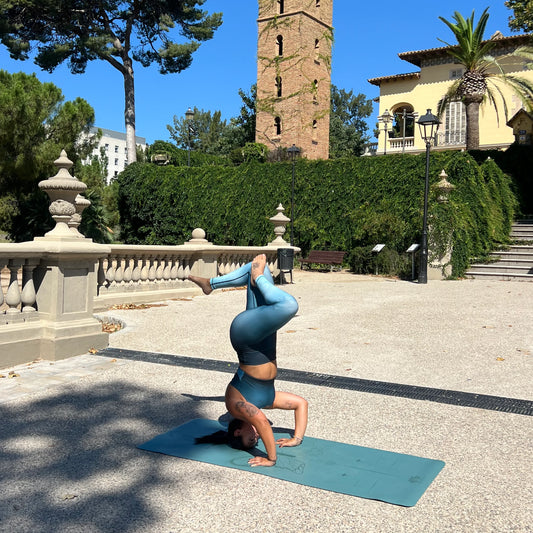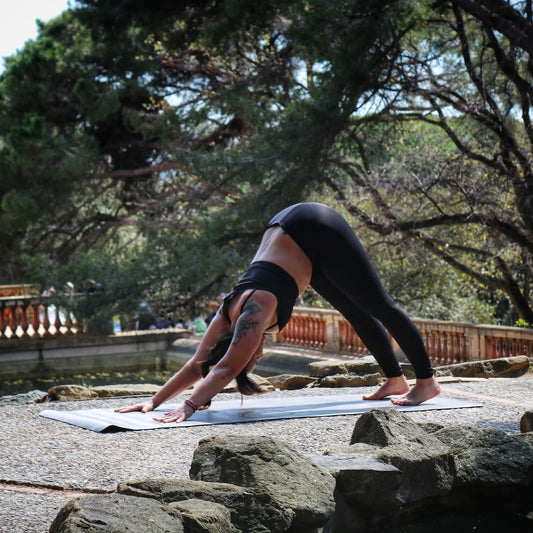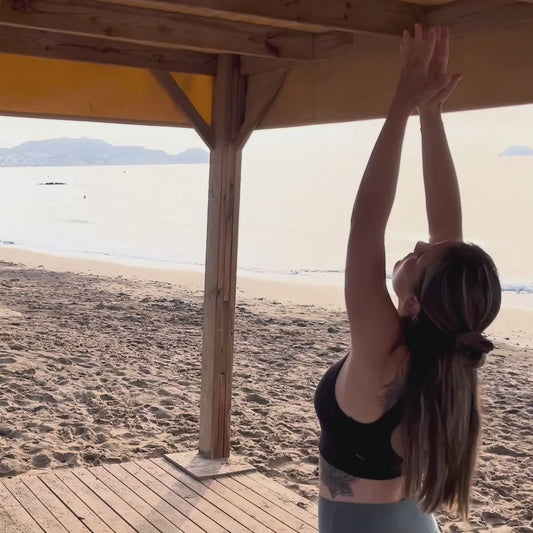As yoga began to spread more widely, many of its representations were modified. Some were simplified and reduced, concealing the profound richness that yoga possesses.
Let's begin...
Hatha Yoga (Ha: sun, Tha: moon) is the first type of physical yoga that presents a list of asanas (yoga postures) from the 10th century onwards, as a way to help practitioners of Raja Yoga (Patanjali's yoga).
In other words, we could be talking about the same technique that Patanjali refers to, only perfected around working with the body.
The word yoga (Sanskrit: "union") can refer both to the means of achieving union and to the union itself. Similarly, we can say that yoga is the practice of silencing the mind, or that yoga is the state in which the mind is silent.

But, what are asanas?
"Two forces that, when balanced, result in balanced and harmonious actions."
The word asana comes from the Sanskrit "meditative seat". It represents an exercise in which a process of regulation and harmonization between opposing forces takes place under the watchful eye of the inner self.
We realize that asana is not merely a physical exercise , but a true holistic working tool. There are as many asanas as there are ways to position our body with awareness and alignment. In other words: what makes a body posture an asana is the essence of what it represents.
👉 Click on the image and discover our Dara design yoga mat "Duality of Life" 🥰
Fundamental aspects in performing an asana:
For a posture to become an asana, it must meet certain conditions:
ATTENTION : "Focusing attention on a single point and in a single place allows one to fully experience the here and now."
Paying attention means voluntarily directing consciousness toward something, so that it gradually transforms into awareness (the achieved perception of that something). Toward what? Toward whatever arises in your practice: the spontaneous dance of the mind, each part of the body in action, the breath, or the complete integration of the posture.
RELAXATION : "Enjoyment is also a reflection of the profound."
Here arises a transcendental element: the harmonious balance between tension and relaxation, and the perfection that a posture acquires when the effort to perform it becomes non-effort. (Depending on the asana, the degree of sedation or activation will vary).
BREATHING : "It is impossible to separate breathing from the practice of asanas."
Breathing opens the door to very subtle aspects in practice: deeper levels of awareness, greater relaxation, refinement in alignment and positioning, among others.
ALIGNMENT : "Exercising our kinesthetic senses enhances our proprioception and our practice."
It consists of the subtle and precise regulation of the positioning of each area of the body. It is a dynamic and constant process.
INTEGRATION : "Then, opposites stop tormenting each other."
The integration of the four aspects mentioned above represents, at the same time, the integration of all aspects of the human being. It is the manifestation of holistic harmony: posture harmonizes muscle tension and breathing, while consciousness becomes both cause and effect of what happens in the body.
In keeping with this, the purpose of work is to illuminate our lives, project awareness, and harmonize our daily reality.
If you are interested in this, you can read more on our blog about incorporating yoga as a lifestyle. ✨

Benefits of Yoga Poses:
Yoga is presented at different levels of depth, and at each level the benefits are different and valuable. Each posture is personal, rich, and suited to the person who performs it.
Asanas offer a method of self-knowledge, therapy, and harmonization, in addition to improving posture, organic functions, and many other aspects .
Although its essential purpose is to silence the mind in order to discover our essence, all other benefits are valuable insofar as they help us achieve that purpose.
You can also read about the Benefits of Yoga for the body and mind ✨
Namaste! 🧘







